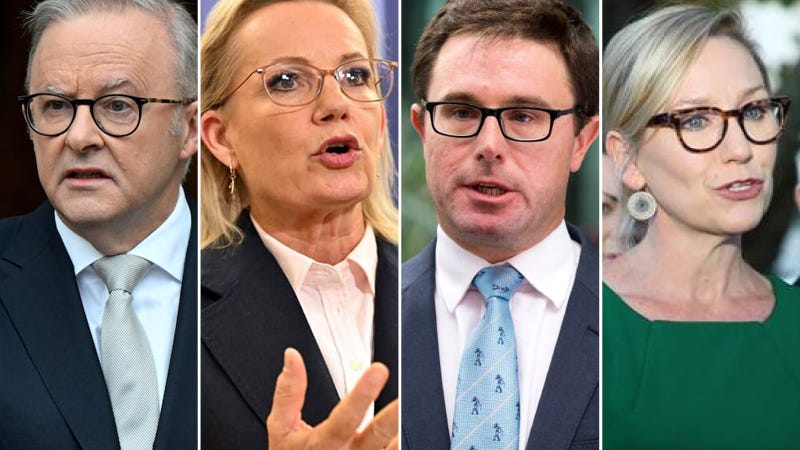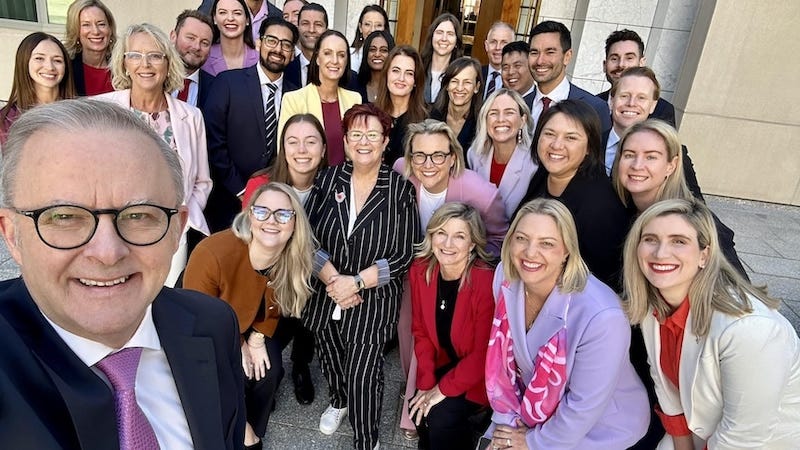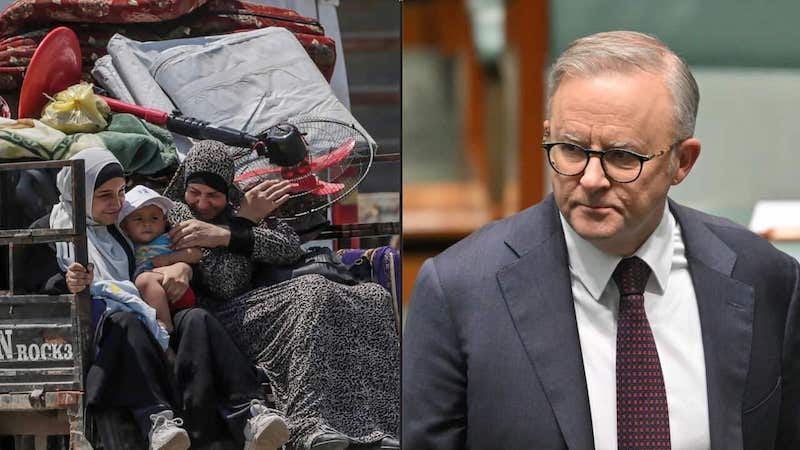The leadership challenge: A new era has begun but who’s ready to lead?
A new style of political leadership is required in Australian politics and the leaders who adapt the best to challenging times will be the ones who succeed.
One of the most dramatic and consequential federal elections in Australian political history is done and dusted and the main parties have all finalised their new leadership teams, setting the stage for what should be a transformative parliamentary term. Of course, Anthony Albanese, boosted by an emphatic victory of 94 seats, remains Prime Minister with his authority unchallenged: this was never in question, after such a massive win.
In contrast, the Liberal Party, after its worst election result ever, has chosen Sussan Ley as its new leader, with Ted O’Brien as deputy, following a failed challenge by Angus Taylor, and the last minute no-show of Senator Jacinta Price in the party room. The Australian Greens, having suffered the shock loss of their leader Adam Bandt’s seat of Melbourne, have chosen to Senator Larissa Waters as the new leader; and within the Nationals, internal tensions fired up as Senator Matt Canavan launched an unsuccessful leadership challenge against David Littleproud, who managed to win after a secret ballot and undisclosed final numbers.
This batch of leaders for the new parliamentary term face vastly different challenges: for Labor, the task is one of delivery and momentum – translating their electoral dominance into meaningful reform. For the opposition parties, it’s far more complicated. They need to contend with irrelevance, reinvention and the uncomfortable electoral truths that were revealed in the election. A massive parliamentary mandate should allow the Labor government to push through its legislative agenda, but it will also raise the stakes: a government with this much political capital can’t rely on excuses or the caution that it so obviously displayed during its first term.
What role can the opposition play in a parliament where the scale of Labor’s win has reshaped the balance of power? For the Liberals, the decision to choose Ley as their leader signals a potential shift in tone and style, but does little to answer whether the party really understands why it lost so comprehensively. The Nationals escaped relatively unscathed in the election, losing just one seat to the independent Andrew Gee, yet their alignment with a Liberal brand in crisis might end up being damaging in the long run. The Greens, with their new leadership, will need to rework their strategies, particularly after losing the flagship seat of Melbourne and will need to manage the contradictions between grassroots activism and federal parliamentary politics.
Will the Liberals listen to what the voters are telling them?
Two weeks have passed since the 2025 election and the wounds inside the Liberal Party are still raw. The party will need to shake of the tag of what RedBridge Group strategist Tony Barry referred to as “the nasty party”; there’s talk of renewal, of soul-searching, of modernisation – but early signs suggest the party is still holding on to the same policies, point-scoring and the benefactors that helped drive this electoral disaster.
The main issue at the moment is the Coalition’s stubborn fixation on nuclear energy, a policy platform came out of nowhere under the leadership of Peter Dutton: it failed to inspire voters and seems to have actively repelled them. It’s not just a question of policy misjudgment – it’s also about the perception: that the Liberal Party is still too heavily influenced by fossil fuel donors and figures such as Gina Rinehart, whose interests lie in preserving the old economy, not building a new one. Why would the Liberal Party cling on to a scarcely believable policy that failed so badly, or continue to take advice from from a benefactor who can offer a massive supply of funds, but little in the way of political intellect?
Rather than turning the page on the climate wars that have paralysed Australian politics for over a decade and moving forward, it appears the Coalition wants to keep the conflict alive, against what appears to be the clear will of the electorate. The 2025 election didn’t just deliver a mandate for Labor; it delivered a strong message – a message that rejects the mindless culture war politics, ideological obstructionism and the relentless negativity.
If the party is serious about gaining credibility again, it needs to look closely at Labor’s actions and behaviour in opposition between 2019 and 2022. Rather than lashing out or descending into reactive politics, Labor focused on discipline, policy development, and restoring trust. It lost the 2019 election despite being ahead in the polls, learned from that defeat, and returned with a quieter, more strategic approach – ultimately winning in 2022, and then again in 2025 with an even larger majority. The lesson is there, if the Liberals are prepared to see it: the road back to power is long, slow, and requires a lot more than just repeating failed tactics from the past and listening in to the dilettantes.
Rebuilding the Green wall with strategy and playing the long game
The election was a painful result for the Australian Greens. After briefly tasting genuine lower house influence in the 2022–25 parliamentary term – with three seats held in Brisbane and one in Melbourne – the party has now been reduced to a single seat once again, this time it’s the seat of Ryan in Queensland.
Under their new leadership, the Greens face a decision over whether should they continue to concentrate on the Senate – where they hold 11 seats and enjoy considerable influence – or redouble their efforts to gain seats in the House of Representatives, where electoral traction is a lot harder to obtain.
There are precedents for lower house success for the Greens. It’s often forgotten, but the first breakthrough for the Greens came in the 2002 Cunningham by-election, when Michael Organ won in an upset result. Then came Adam Bandt, who held Melbourne for 15 years from 2010 onwards, becoming the face of the lower house ambitions for the Greens. The 2022 election delivered a further breakthrough with the so-called “Greensland” across Brisbane, picking up Ryan, Griffith, and Brisbane. But this momentum proved hard to maintain. By 2025, only one lower house seat remains, and those promising gains in inner-Melbourne didn’t materialise.
Yet the potential is still there. The party has demonstrated that, with the right political strategy and electoral messaging, it can win in the House of Representatives. But it requires a longer-term view – one that goes past individual electoral cycles. It means targeting winnable seats with precision, building strong local campaigns over multiple elections, and connecting with communities beyond the traditional environmental base. The Greens know how to do this – they’ve done it before – but what’s needed now is a renewed commitment to that approach.
What would success look like for the Greens in the lower house? Winning 10 seats would be fantastic, but 15 seats would make them a real force – perhaps giving them the balance of power in a minority parliament, in the same way that they operate in the Senate. Of course, that didn’t happen in 2025, despite more favourable conditions for a minority government than at any point in the last decade. But it’s not out of reach.
The Greens are not at the same crossroads that apply to the Liberal Party. They will continue to be a powerful force in the Senate – scrutinising legislation, shaping climate policy, and holding governments to account. Or they can begin the difficult but essential process of re-establishing themselves as a genuine third force in the lower house. The question is not whether they can do it but whether they are prepared to commit, again, to the long, often unrewarding task of building up electoral power over a longer period of time.
The continuing gender divide for the conservatives
One of the underlying issues of the 2025 election was gender equity – and it’s clear which parties took the issue seriously, and which ones still have a long way to go. Labor now has a federal caucus that is 57 per cent female and a Cabinet with 51 per cent women – it’s more than symbolic, and this gender balance has translated into real influence and leadership. While Prime Minister Anthony Albanese and Deputy Prime Minister Richard Marles remain in these two senior positions, it’s women such as Senators Penny Wong and Katy Gallagher who are at the heart of the government’s policy direction and Cabinet authority.
For the Greens, the issue is even more settled. With Waters and Mehreen Faruqi leading the party, and three-quarters of their parliamentary party identifying as women, gender representation has never been a challenge. Their politics are built on inclusion, and the electorate recognises this – particularly younger voters, for whom diversity and equality are non-negotiable issues.
But the Liberal and National parties remain stuck in another era that we thought might have been well and truly over. Only 21 per cent of Liberal MPs and 31 per cent of Nationals MPs are women – a contrast that will continue to cause problems for them at the ballot box. The elevation of Sussan Ley to the Liberal leadership is, at face value, a step forward. Yet it’s hard to ignore the deeper structural and cultural barriers within the party that routinely keep women out of winnable seats and leadership positions. The Liberal Party remains captive to internal power blocs, particularly the men on the hard right, and if Ley wants to survive in the role – and do more than just symbolically hold the position – she will have to navigate constant destabilisation from within.
And then there’s the media ecosystem. Sky News and aligned voices on the party’s fringes have already started megaphoning their dissent at the choice of Ley and suggesting that any move away from the aggressive, reactionary politics of the recent past is a betrayal of Liberal Party. Ley is caught between two irreconcilable imperatives: to modernise the party and bring it back to the political centre where most voters now sit, or to appease the angry, ideologically rigid forces that dominate its internal narrative and external media messaging.
This leadership path is narrow: if the Liberal Party is serious about survival and success in the future, it needs to rapidly and comprehensively reform. That means building a talent pipeline for women, backing them with resources, and placing them in seats they can win: quotas, targets, allotments; whatever they want to call it, mechanisms for getting more women into the Liberal Party need to be introduced. It also means abandoning the stale ‘blokesville’ formula of climate denialism, culture war posturing, and economic policies designed for donors and friends in the right-wing media rather than voters. Certainly, there are many women in the community who champion these right-wing issues, but there just isn’t enough of them to achieve electoral success.
There’s also a leadership test for the Prime Minister
For Prime Minister Albanese, the 2025 federal election result was not just a political victory – it was a generational landslide. With 94 seats, a commanding 19-seat majority, and a 51-seat gap between Labor and the shattered leftovers of the Liberal Party, Albanese now leads a government with more power and political capital than any in recent times. The question that looms is not whether he has the numbers to govern decisively, but whether he has the conviction to use these numbers.
In the immediate aftermath of the election, Albanese coined the previously unheard phrase of “patriotic progressiveness” to explain the Labor Party’s appeal to the electorate – a fusion of national interest with progressive values. But what does this slogan actually mean? Is it the beginning of a new political philosophy, or just a rhetorical shield for caution dressed up as principle? If “patriotic progressiveness” is simply the next iteration of softly-softly centrism, it will fall far short of the demands of the here and now – best to leave this sort of rhetoric behind, because this is not the time for political timidity and sloganeering; it’s time for moral and political clarity.
The Albanese government was warned by powerful Zionist lobbyists and sections of the media that its failure to enthusiastically support Israel in its ongoing war in Gaza would cost it dramatically in the election – especially in electorates with significant Jewish communities or strong pro-Israel sentiment. But those predictions did not materialise: as it turned out, the Zionist and pro-Israel lobby groups are essentially paper tigers and use bullying and intimidation to achieve their goals and harass governments of the day.
Labor retained and gained seats in diverse electorates and it seems that the public was far more focused on the cost of living, health, housing, and climate change than whether the government passed the litmus test of overt support for the state of Israel. A good government would realise this and cut the pretence.
Despite this, Labor’s official position still remains muted – at best cautiously critical of Israel’s conduct, at worst complicit in silence. Since the election on May 3, the credible reports of war crimes have continued to emerge, the humanitarian catastrophe of indiscriminate killing and starvation in Gaza continues as a genocide, yet the government is still offering only vague appeals to restraint and “both sides” diplomacy. If “patriotic progressiveness” is to mean anything beyond a campaign slogan, it must start with telling the truth about what is happening in Gaza.
Australia can’t claim to stand for progressive values – patriotic progressive values – while continuing to arm, support, and provide diplomatic cover for a state engaged in the systematic destruction of an entire population. It cannot claim the moral high ground on human rights while refusing to recognise the humanity and nationhood of Palestinians.
This is the test of leadership. Not just managing inflation or balancing the budget, keeping the Caucus calm, or the media cycle quiet. Leadership is about principle in the face of pressure and about choosing justice over convenience, just as Albanese did as the co-founder of the Parliamentary Friends of Palestine in 1999 (incidentally, Sussan Ley was the leader of this group in 2003, as was former conservative Liberal MP, Ross Cameron). And with the kind of electoral mandate this government now holds, there are no more excuses for deferral or delay.
If Albanese chooses to govern as though the election was just a congratulations on a job done well, he will squander an opportunity that might not ever come again. But if he sees this for what it truly is – a once-in-a-generation mandate for meaningful, values-driven reform – then he has the chance to reshape the political landscape and Australia’s place in the world. That would be real leadership.












Yes. Bold leadership expected by the voters now. Address all the internal stuff. Be more vocal with actions on the genocide being perpetrated by Israel - this is not being anti-semitic. Cancel Aukus as a necessary precursor to a different submarine solution and strategizing a realignment in the Asia Pacific as we are no longer the "deputy of the rogue sheriff".
The Liberal Party has many issues they'll need to deal with, the most obvious one was how to deal with donors and benefactors who have considerable sway over the policies and ideas that they take to the public. Nuclear is an excellent example. The big push for nuclear has only happened over the past two years, and it's been thoroughly rejected by the public - although elections are decided by many issues, it's obvious that the policy on nuclear is one that not many people want. But, instead of comprehensively ruling it out after the election loss, they're still talking about it. Why, because they're beholding by the mining industry, especially Hancock Corporation. The main issue for a political party is to survive, the second issue is to get into office. The Liberals are now focusing on the first part – through support and donations from the mining industry so they can survive – but that support will stop them from achieving the second part – getting back into office. This is a long-term problem for them.